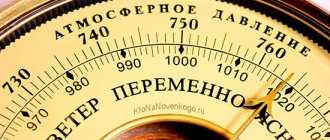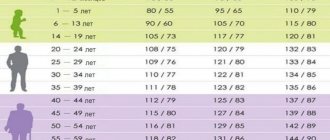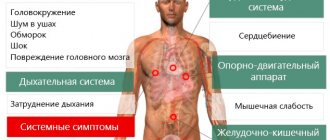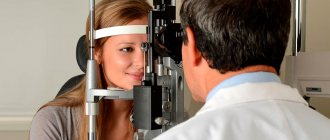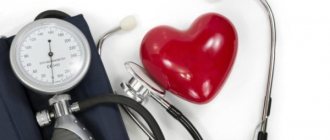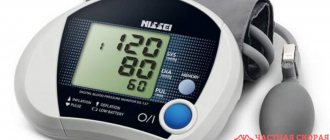Pressure indicators depend on the volume of blood that the heart can pump and the degree of resistance of the vessel walls. Its lowest level is in the right
atrium, and the highest is in the left ventricle. The upper limit is determined by the blood pressure ejected by the heart during contraction. This indicator is called systolic. The lower limit can be measured at the moment of complete relaxation of the heart. In this case we are talking about diastolic pressure.
At first, it is difficult to understand what the numbers mean when measuring blood pressure. To quickly adapt, you need to decipher them. Blood pressure is measured in millimeters of mercury. They got their name because of mercury tonometers. Previously, they were used to determine blood pressure, so such units of measurement were introduced. Despite the creation of new high-precision instruments, their value was left even for electronic versions.
In Russia and many other countries of the former USSR, blood pressure is measured in mmHg. Art. However, in some European countries the definition system is slightly different. To understand how their blood pressure is measured, you need to divide the result by 10. This is due to the fact that they usually take into account cm Hg. Art.
Pressure fluctuation
Research has shown that the pressure value is not constant. It is subject to vibrations that are called Mayer waves. They were discovered by the German Sigmund Mayer at the end of the 19th century. Based on the research results, the scientist concluded that in humans the oscillation frequency is approximately 0.1 Hz or 5-6 times per minute. Mayer waves are also characteristic of animals, such as rabbits and rats, but their rates are 3-4 times higher.
It was experimentally established that pressure fluctuations are constant and do not change depending on age, weight or gender. However, their amplitude may increase due to the activity of the sympathetic division of the autonomic nervous system. The only question that remains unresolved is the cause of the occurrence of Mayer waves, but research in this direction is underway.
24-hour blood pressure monitoring (ABPM)
In recent years, ABPM methods have been used that make it possible to continuously monitor blood pressure levels, recording all fluctuations. This is the most accurate and efficient measurement method today. To implement it, the patient must wear a special compact device for 24-48 hours, which measures pressure every 10-15 minutes. This allows you to track the dynamics of blood pressure and see its changes throughout the day. In this case, the patient can lead a normal life without significant restrictions.
ABPM allows you to select the most effective treatment, and in patients already taking medications, to assess the adequacy of therapy.
Indications for ABPM also include regular fainting conditions, borderline increases in blood pressure, a combination of hypertension with vascular lesions of the brain, and others.
Prevention and treatment
Surprisingly, the causes of hypertension and hypotension are sometimes the same - stress, the influence of hereditary factors, depression. In addition, excess weight, smoking, alcohol abuse, addiction to salty foods and a sedentary lifestyle can lead to hypertension, and hypotension can be caused by a too strict and inadequate diet or a sharp change in weather conditions. Preventing blood pressure problems is easier than eliminating them, and a few very simple rules will help reduce the risk of their occurrence.
At low pressure
To prevent hypotension, good sleep (at least 8-9 hours) and a healthy, balanced diet are very important, and you should eat about 4-5 times a day. Physical activity is necessary, but moderate - for example, walks and simple exercises 2-3 times a week. It is very important to refrain from nervous overexertion, and if this is not possible, take mild sedatives.
With high blood pressure
As in the case of hypotension, with hypertension you need to properly build a daily routine and diet, and preference should be given to light meals low in salt and fat. Moderate sports activities are also beneficial. Quitting smoking is mandatory, as it has a particularly detrimental effect on the body of people with hypertension.
All information related to health and medicine is presented for informational purposes only and is not a reason for self-diagnosis or self-medication.
Indicators
In medical practice, 120/80 is considered to be the ideal blood pressure for people over 14 years of age. However, there are situations when the indicator differs slightly from the norm depending on individual characteristics. Some people do not feel any changes in their condition if the pressure is decreased or increased by 10-20 units. Such small deviations do not greatly affect health, but when the indicator exceeds 140/100 or falls below 100/80, then it is time to start treatment.
Depending on the indicators, pressure is divided into the following types:
- 50/35 - 89/59 - arterial hypotension;
- 90/60 - 129/84 - permissible limit;
- 130/85 - 139/89 - prehypertensive state;
- 140/90 - 210/120 and above - arterial hypertension.
Indicators ranging from 180/110 to 210/120 and above are equated to a hypertensive crisis. If it occurs, the patient must be urgently hospitalized to avoid consequences, for example, a heart attack or stroke.
Common mistakes
In the first stages, patients make classic mistakes that greatly distort the data. These include:
- when the hand is below or above the level of the heart muscle;
- an uncomfortable posture is adopted, the person is too tense;
- wearing clothes that are too uncomfortable;
- The tonometer cuff is tightened.
In such cases, the pressure will be too high, and if you place the hand above the level of the heart, the readings will be underestimated. Find out how to correctly measure pressure with a manual tonometer and there will be no such errors in the study.
The article was written using https://apteka-ds.com.ua/catalog/domashnya-medtekhnika/tonometry.
Indicators in children
Depending on the age of the person, his indicators may be different.
For babies under one year old, normal blood pressure is calculated using the formula 76 + 2*n. Instead of “n”, you need to substitute the child’s month. The lower pressure reading should remain at 2/3 of the upper one. For an adult child, the calculation is carried out using the same formula, but now instead of “n” the number of years is inserted, and 76 is changed to 90. For example, if the child is 5 years old, then:
90+2*5=100
We get the upper figure, the lower one is approximately 2/3, which means the final pressure is 100/66 mmHg. Art. Small differences in the final results between girls and boys are acceptable, but not more than 5-10 mm. rt. Art.
What pressure is called upper and lower?
When the heart contracts, it creates a push for blood movement. This phase of the work of the heart muscle is called systole, and the indicator recorded at this moment is called upper or systolic pressure.
Before a new contraction, the heart relaxes as much as possible, the diastole phase begins, and at this moment the minimum pressure is recorded. It shows the degree of blood pressure on the vessels during the period between heart contractions.
Definition
Pressure is measured using a tonometer, which can be mechanical or electronic. The second type of device is divided into automatic and semi-automatic. The advantage of an electronic tonometer is that some models can additionally determine the degree of arrhythmia and heart rate.
The Korotkoff method is used to measure blood pressure with a mechanical tonometer. Its essence is to supply air into the cuff using a bulb and listen to the pulse with a stethoscope. The first heartbeat represents the upper pressure reading, and the last beat represents the lower one.
Semi-automatic electronic blood pressure monitors can be used to measure blood pressure without a stethoscope. Usually, air is pumped into the cuff using a bulb until the beep sounds. Next, the device releases it, determining the pressure indicator. The final result is shown on the display.
Fully automatic devices do not require manual air pumping. They measure blood pressure after pressing a button on the screen. The process lasts approximately 30 seconds.
An innovation in the field of pressure measuring devices is an implant that is implanted into the pulmonary artery. It does not exceed the size of 1 coin and allows you to constantly monitor the pressure level and send a signal to the computer.
Regardless of the type of determination device, all results are displayed in mmHg. Art. The procedure should be carried out in the morning and evening for people using antihypertensive medications. During the day, measurements are taken only when necessary. To obtain more accurate results, pressure should be measured on both limbs.
Device of a manual (mechanical) tonometer
Having become accustomed to modern electrical gadgets, many people do not know how to correctly measure pressure with a tonometer with manual air injection. This is easy to do, because the equipment of the mechanical device is quite simple and intuitive to use.
First of all, the device consists of a non-elastic cuff with a tube inside it. Air passes through it from the bulb, which the person pumps into the cuff. As it straightens, it compresses the main brachial artery.
During the slow bleeding of air, it is necessary to monitor the arrows on the dial. They show the top and bottom readings of a person's blood pressure. The cuff must fit tightly around the patient's shoulder, otherwise the readings will be incorrect.
The impact of extraneous factors on the final results
To obtain accurate indicators, you need to take into account many factors, namely:
- Time when blood pressure was measured.
- The psycho-emotional state of a person during the procedure.
- Use of hypertensive or antihypertensive medications.
- Abuse of bad habits (smoking, drinking alcohol and drugs).
- Drinking strong coffee or tea.
Some suspicious people are subject to the “white coat” syndrome. They are completely healthy and, if there are no medical personnel nearby, their blood pressure remains within the normal range. The situation changes dramatically if the measurement is taken by a doctor. The pressure jumps sharply, but usually not higher than 140 per 100 mmHg. Art.
A course of therapy for such people is usually not prescribed, since they do not have any pathological abnormalities. The only thing a specialist can do is talk. In the conversation, he will talk about the dangers of sudden surges in blood pressure, and also advise you to use sedatives and stop being nervous. In some cases, it is recommended to help a psychotherapist.
To accurately determine blood pressure, it is important to understand in what units it is measured. The historical facts described above can help with this. After familiarizing yourself with them, it will be much easier to take measurements, especially if you first study the permissible age limits.
Regulatory data
The level of blood pressure, diastolic and systolic, is influenced by:
- general condition of the body's blood vessels;
- gender;
- patient's age;
- stressful situations;
- overwork;
- physical exercise;
- a certain way of life.
The difference between the two is related to the physiological processes taking place in the human body. Contraction of the heart muscle provokes a blood discharge that affects the left ventricle. Subsequently, as the blood moves through the arteries, capillaries and veins, the blood pressure level gradually decreases. As the flow returns back to the heart, it will be minimal.
Table of normal indicators:
| Blood pressure in mm | Diastole in mm | Systole in mm |
| Norm | 80 | 120 |
| Valid values | 81-85 | 121-130 |
| Excess | 86-89 | 131-140 |
| Hypertension 1 st. | 90-100 | 141-160 |
| Hypertension 2 tbsp. | 101-110 | 161-180 |
| Complex hypertension | over 110 | above 180 |
Prevention of hypertension
Prevention of hypertension is not specific. To reduce the risk of developing the disease, it is recommended to adhere to the rules of a healthy lifestyle:
- Stop smoking and do not abuse alcohol. Alcohol and nicotine destroy blood vessels.
- Normalize weight. Obesity itself can cause hypertension. In some patients, weight loss restores normotension without medication.
- Do physical education. Cardio exercise of at least 150 minutes per week and walking are especially effective for strengthening the cardiovascular system.
- Balance your diet in terms of calories and composition. It is necessary to consume fiber daily and reduce animal fats and salt in food.
- Monitor your drinking regime. Insufficient water leads to blood thickening and retention of toxins. The norm for an adult is 2 liters per day.
If possible, it is better to avoid stress and overexertion, get enough sleep and spend time outdoors.
Symptoms of hypertension
Signs of pathology are the following conditions:
- Headache, often in the occipital region. May not respond to analgesics.
- Pulsation in the head, noise in the ears.
- Dizziness may occur with a sudden change in position.
- Decreased visual acuity, darkening of the eyes, sensation of “floaters”.
- Chills, increased sweating, rapid pulse, nausea.
- Nose bleed.
- Redness of the face and ears.
- Feelings of anxiety, restlessness, increased fatigue.
Symptoms may indicate more than just hypertension, but when one or more conditions appear, it is recommended to first measure blood pressure. If the values are higher than normal, consult a therapist or cardiologist.
What effect does alcohol have?
Many people believe that drinking alcohol helps lower blood pressure. However, here it is necessary to remember that we are talking about vasodilation, which does not necessarily play a positive role. Alcohol should be consumed in moderation.
Regular drinking of alcoholic beverages, even in small quantities, can increase blood pressure. You should also remember about the biologically active substances contained in many alcoholic beverages. Energy drinks pose a high risk to the human body. Combining them with alcohol can lead to the most harmful consequences.
At-risk groups
All elderly people are at risk of developing hypertension due to the natural aging of blood vessels and the heart. At an earlier age, the likelihood of high blood pressure is higher if:
- Diseases of the kidneys and blood vessels.
- Congenital heart defects.
- Obesity.
- Alcohol abuse, smoking.
- Frequent stress, disruption of work and rest schedules.
- Systematic intoxication with harmful substances.
- Eating foods high in cholesterol and salt.
- Diseases of the endocrine system.
People who have had head injuries or heart and brain surgery should also monitor their blood pressure.

